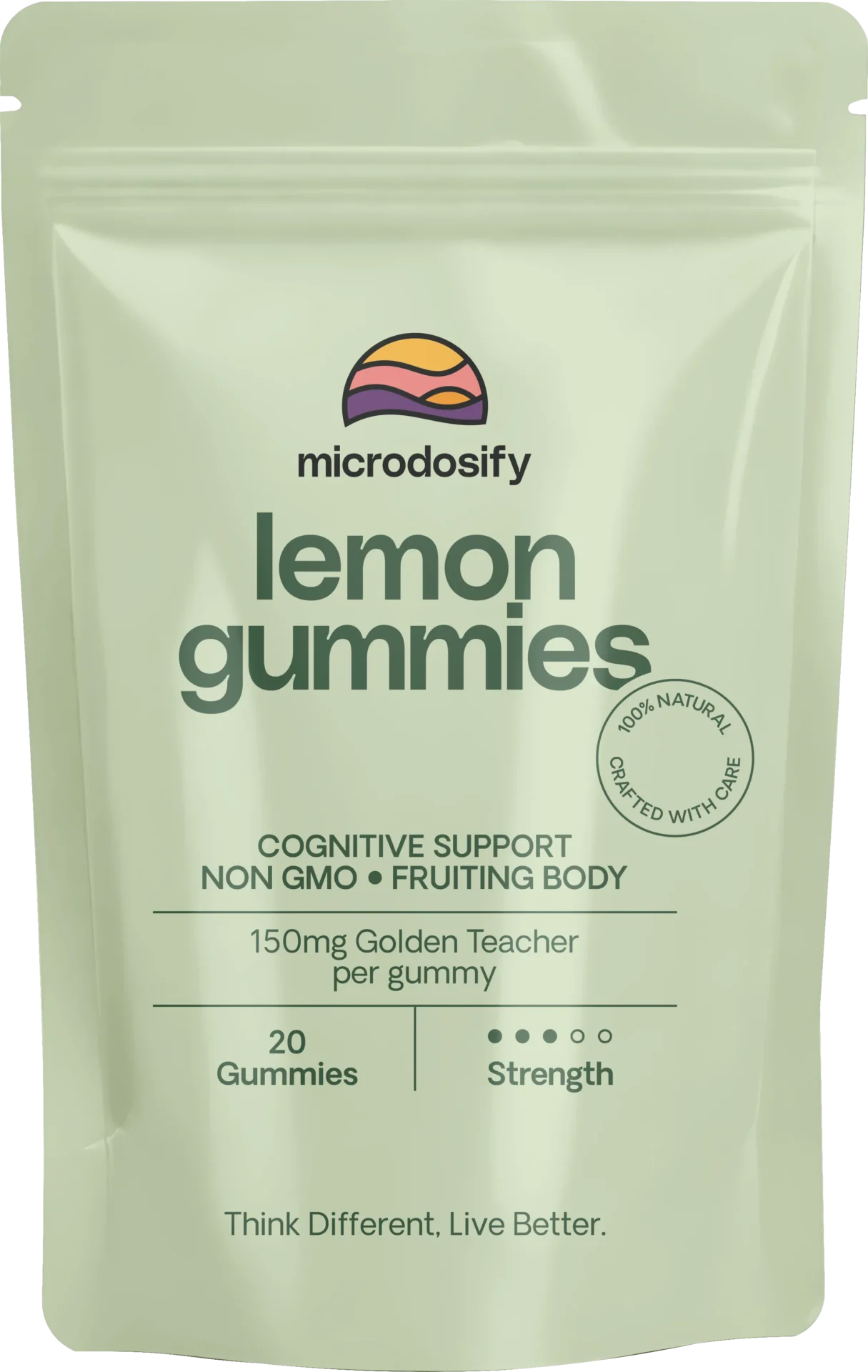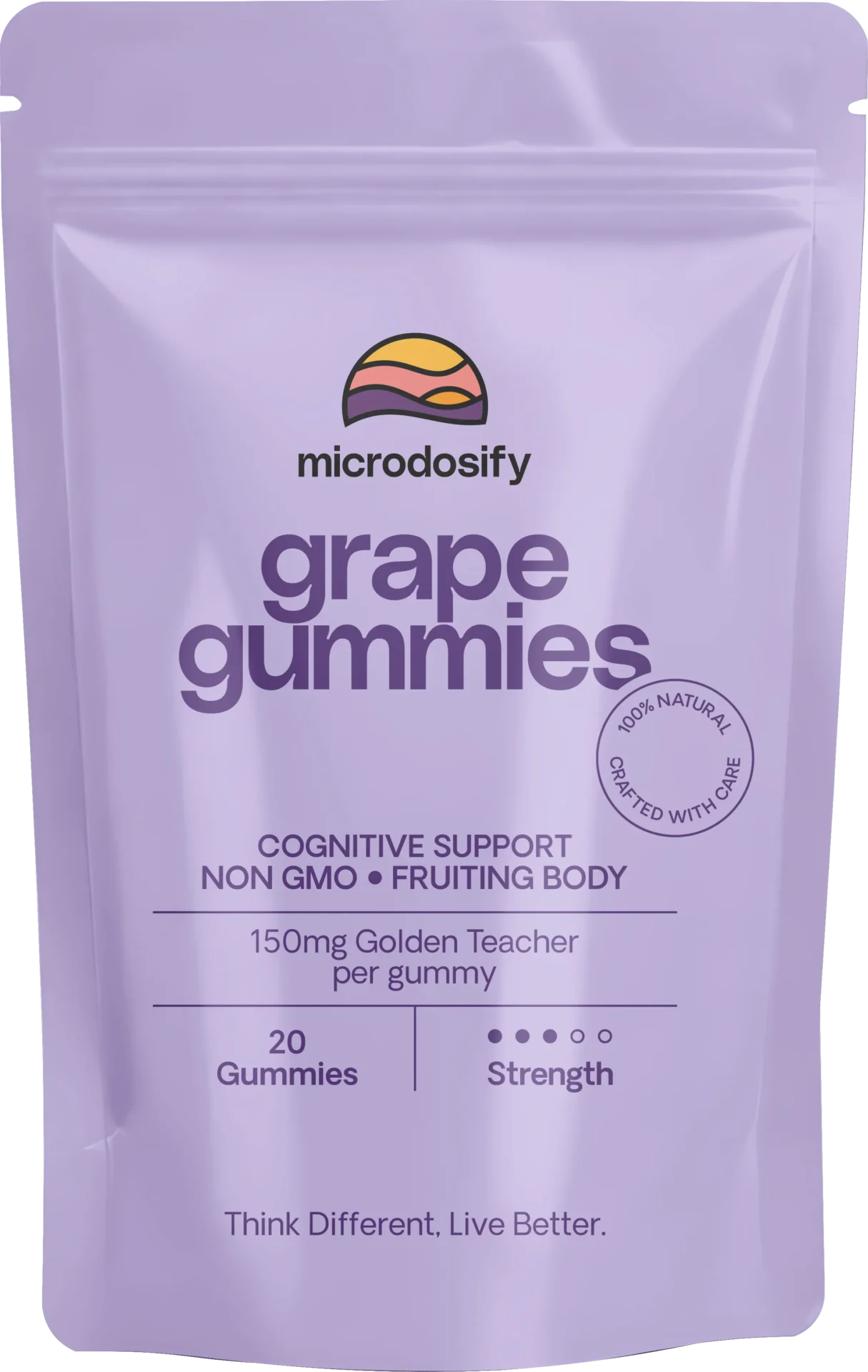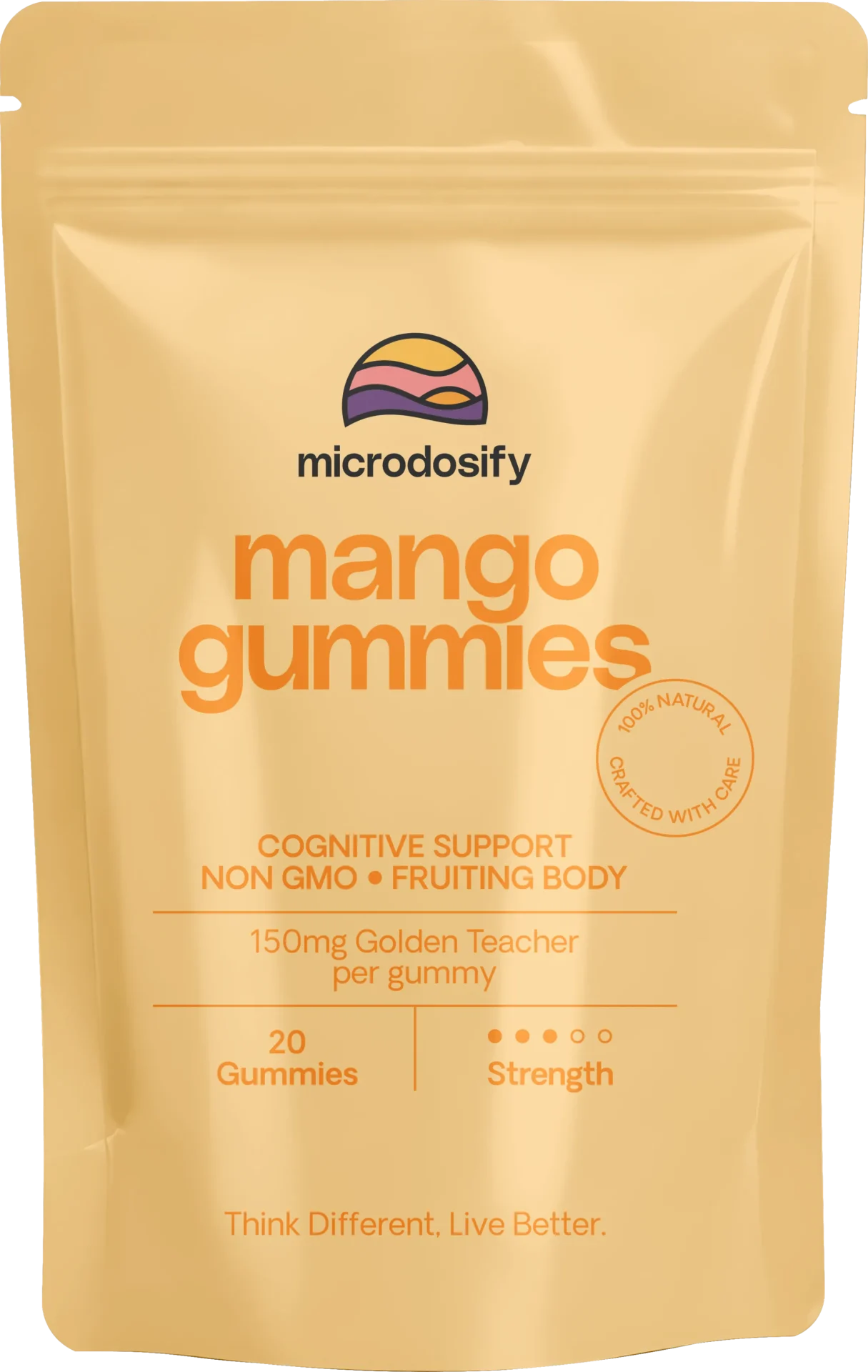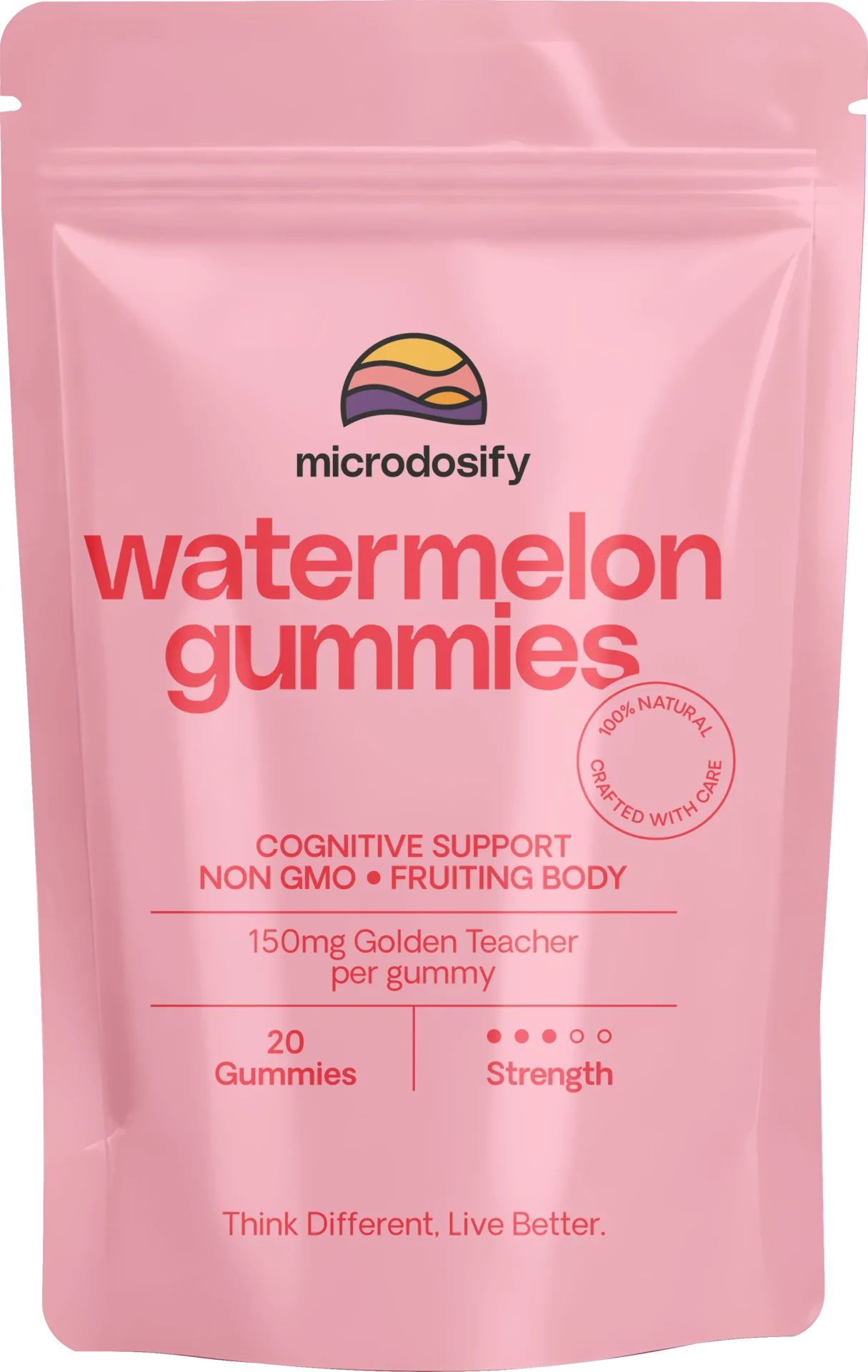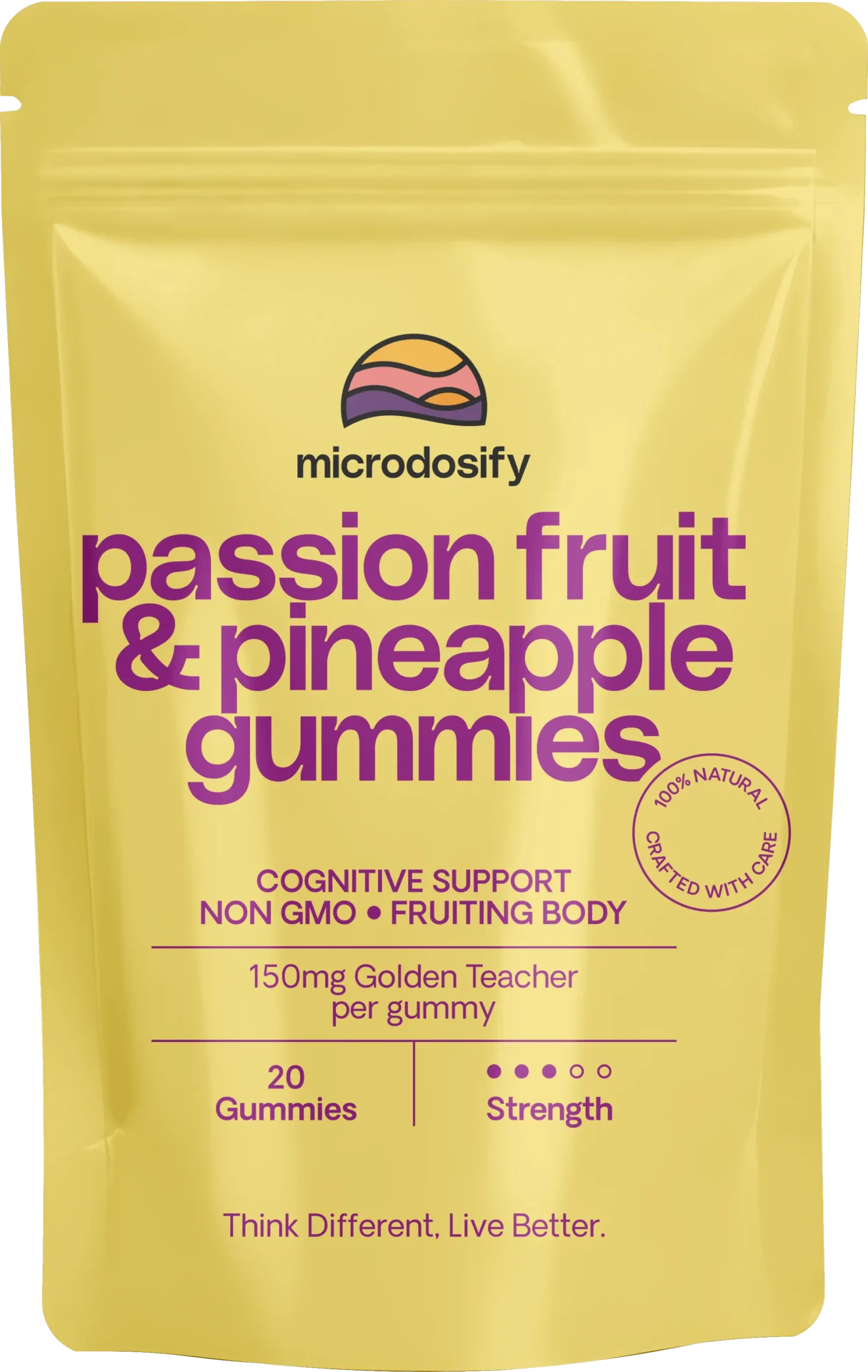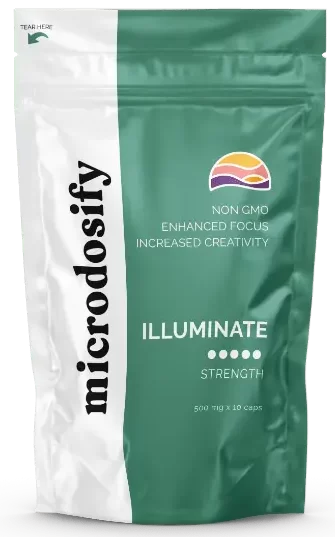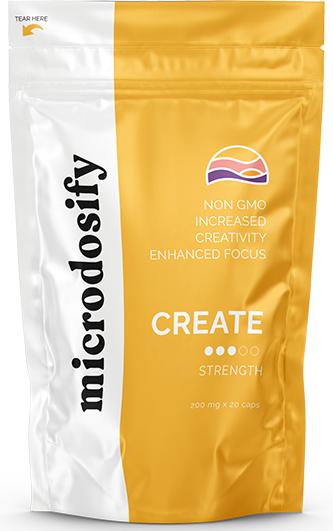What is Microdosing?
Microdosing involves taking low, sub-perceptual doses of psychedelics, such as psilocybin mushrooms and LSD.
The range of microdosing is typically 1/10th to 1/20th of a full dose. A typical range for a psilocybin mushroom microdose is between 50 mg to 250 mg of dried psilocybin mushrooms.
Shop: Check out Microdosify’s pre-dosed range of high-quality, organic microdoses.
This practice aims to enhance mental and emotional functioning without the intensity of a full psychedelic experience.The appeal of microdosing lies in its reported benefits, including improved creativity, focus, and emotional equilibrium. Many users note better problem-solving abilities, increased productivity, and a deeper connection to their environment.
Beyond cognitive gains, microdosing is also explored for mental health relief, helping some manage depression, anxiety, and PTSD symptoms. This has driven both public interest and scientific investigation into microdosing’s potential therapeutic effects.
Related: Read a comprehensive list of microdosing benefits and risks
Please note that this article does not constitute medical advice. ALWAYS consult with a doctor or medical professional regarding your own situation.
What is known about microdosing and medications?
To date, there isn’t a lot of clinical research on the interaction between psilocybin (the active ingredient in mushrooms) and most medications.
Dr. James Fadiman, arguably the most famous microdosing researcher and proponent, has collected thousands of reports from microdosers across the globe, including information about medications that have been taken while microdosing.
The results of this survey have been compiled, and Dr. Fadiman shares a full list of medications that don’t seem to have negative interactions with microdosing on his website here. It is important to note that while some people have combined medications on this list with microdosing without negative consequences, this does not guarantee their safety.
It is important to discuss beginning a microdosing practice with a psychedelic-friendly doctor or pharmacist before combining it with your medications. The spiritpharmacist.com is a fantastic resource for this purpose.
Are there any medications that should not be combined with microdosing psilocybin mushrooms?
According to Microdosing Institute, leading educators in the microdosing space, it is advised to avoid microdosing if you are actively taking Lithium or Tramadol. At this time, there are no other known medications that are absolutely contra-indicated with microdosing psilocybin.
It is not advised to stop taking medications, especially if they are important for your well-being.
Can you microdose while on SSRIs?
Historically, most experts have suggested against microdosing psilocybin while on SSRI’s due to the potential risk of serotonin syndrome. However, in recent years, more and more experts are beginning to agree that microdosing psilocybin while on SSRI’s is unlikely to cause serotonin syndrome.
While it may not be unsafe to microdosing while on SSRI’s, many people who have done so have shared that SSRI’s blunt the effect of microdosing. Whether or not this effect is just in physically feeling the microdose, or if it also applies to the potential neuroplastic benefits of microdosing psilocybin is unknown.
Some people have also explored tapering off of their SSRI’s with the support of microdosing. While reports of success with this process are anecdotal, it is important to note that tapering SSRI’s should always be done alongside the guidance of a medical professional or therapist.
The Spirit Pharmacist has a thorough blog on antidepressants and psychedelics.
Can you microdose while on ADHD meds?
Recent research by Maastricht University sought to understand whether microdosing could support those with ADHD. In this study, preliminary research showed that it may not be unsafe to microdose psilocybin while on ADHD meds.
The results also showed that research participants on traditional ADHD meds also experienced positive results of their microdosing practice, but it took longer for this group to see these positive benefits compared to microdosers that were not on traditional ADHD meds.
Final Thoughts
There is limited research available, but it does appear that microdosing psilocybin while on most traditional medications may be safe. Lithium and Tramadol are a known exception, and you should not begin a microdosing practice if you are taking these medications.
If you are on traditional medications, it is important to check with your doctor or another psychedelic friendly medical professional before combining medications with a microdosing practice. It is also advised to ALWAYS consult with your doctor before stopping or tapering off any medications to begin a microdosing practice.
Resources:
- Fadiman J (January 2016). “Microdose research: without approvals, control groups, double blinds, staff or funding”. Psychedelic Press. XV
- Brodwin E (30 January 2017). “The truth about ‘microdosing,’ which involves taking tiny amounts of psychedelics like LSD”. Business Insider.
- Everything You Wanted to Know About Microdosing (But Were Afraid to Ask)”. The Huffington Post. 13 January 2016
- Anderson, Thomas; Petranker, Rotem; Christopher, Adam; Rosenbaum, Daniel; Weissman, Cory; Dinh-Williams, Le-Anh; Hui, Katrina; Hapke, Emma (December 2019). “Psychedelic microdosing benefits and challenges: an empirical codebook”. Harm Reduction Journal.



